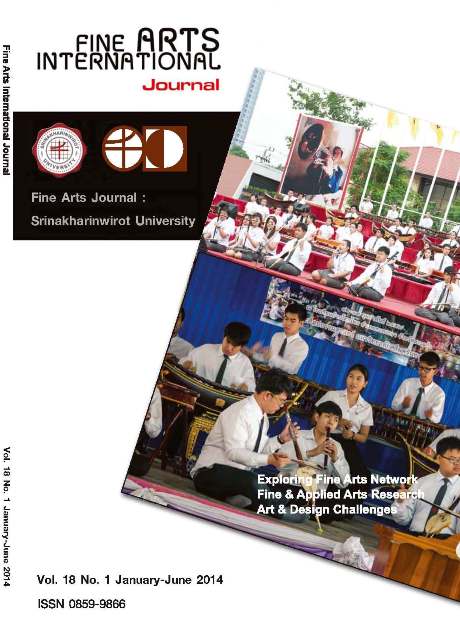Pipat Mong Hongsa Wadee in Mon Village Baan Wangka, Tumbon Nonglu, Ampher Sangkhaburi, Kanchanaburi Province.
Keywords:
Pipat Mong Hongsa Wadee, Mon Village Baan WangkaAbstract
Pipat Mon Hongsawadee Ensembleis a musical band of Mon National Cultural Center (MNCC) in Sangkhlaburi. The center was established in 2002 with the aims for Mon cultural preservation and exchange among Mon people in Thailand and in Mon State, Myanmar. The objectives of MNCC are: meetings, preservation of Mon books, language and culture, and exchange of Mon culture. The late Ven. Uttama granted the permission to build the center in Wangka village. Nai Monchai or Nai Kasouh Mon (in Mon) was the director of MNCC and organized activities according to the objectives of the center.
The musical instruments of Pipat Mon Hongsawadi Ensemble comprised of 12 pieces, classified according to phonic originations in 4 categories. 1. Chordophone: Jyam (Mon Zither) Kro (Mon Fiddle), Tana (Mon Lyre with 14 strings) 2. Aerophone: Khanua (Mon Pipe) Taluod (Mon Flute) 3. Membranophone: Padwaing (Mon Orchestrated Drums), Hapern (Mon Drum); and 4. Idiophone: Pattala Toon (Bamboo Xylophone) Patkaing (Orchestrated Gong) Khadi Khadap (Cymbal and Wooden Cymbal), Chaing (Big Cymbal) and Mong (Gong).
The current teaching of Pipat Mon Hongsawadee Ensemble is organized systematically. The director of MNCC invited Thoporn and Mon Sein, Gamelan experts from Mon State, Myanmar to teach at the center for a period of 2-3 months. The students were divided into 2 groups: basic and advanced courses.






